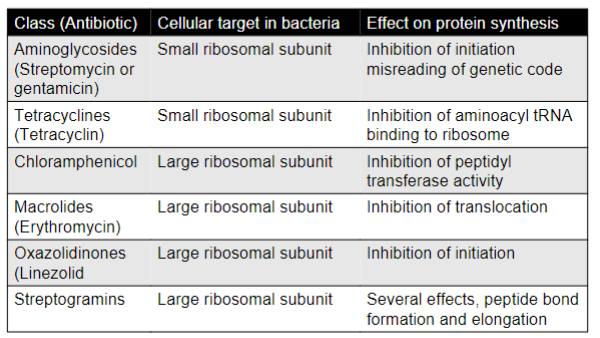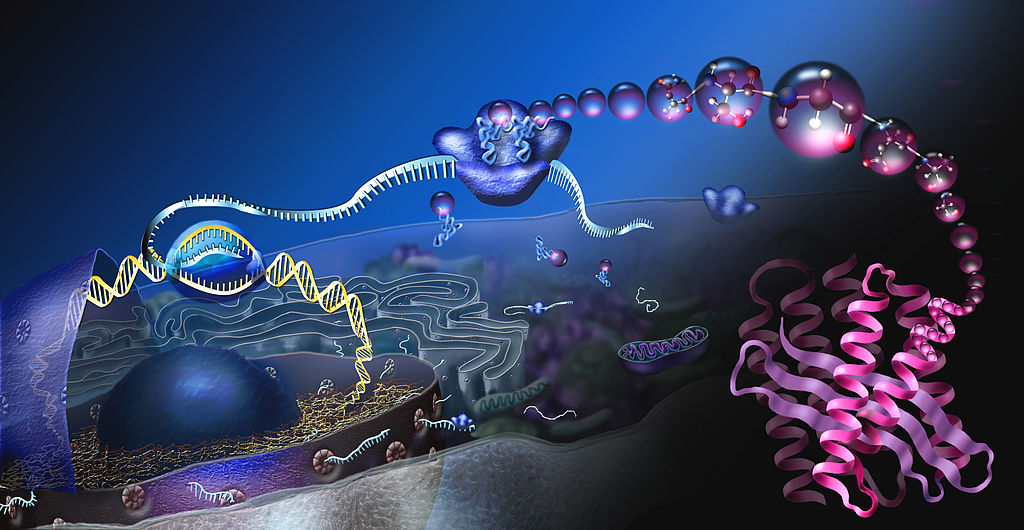
Protein Synthesis (The Living Cell)
Outcomes Describe the flow of genetic information from DNA comprising the genome to form proteins Define the term protein synthesis and describe the cellular components involved in protein synthesis Identify the essential features of the process by which proteins are synthesised State the fundamental differences in the prokaryotic and eukaryotic ribosome Define which the common antibiotics target protein synthesis
-
Picture outlining gene expression in eukaryotic cells:
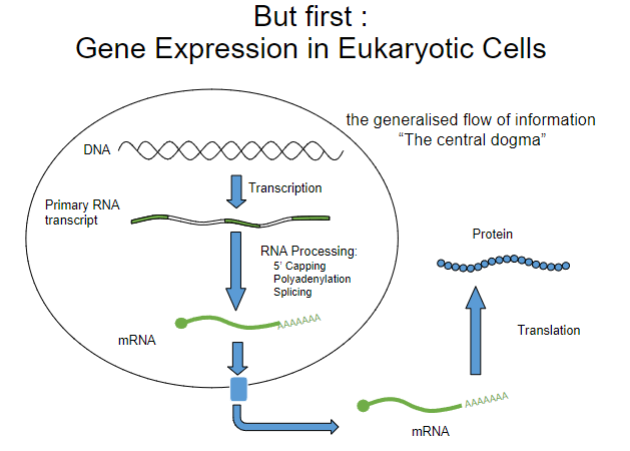
-
Can you remember the key parts of the eukaryotic mRNA structure?
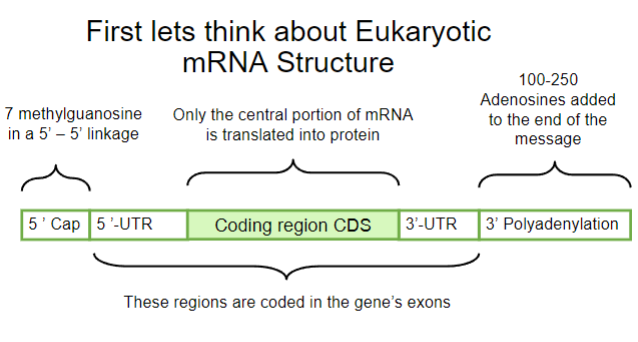
-5' cap
-5'-UTR
-Coding Region CDS
-3'-UTR
-3'Polyadenylation
-
Protein synthesis is.....?
Is a multi-stage process carried out by ribosomes
-
What are ribosomes?
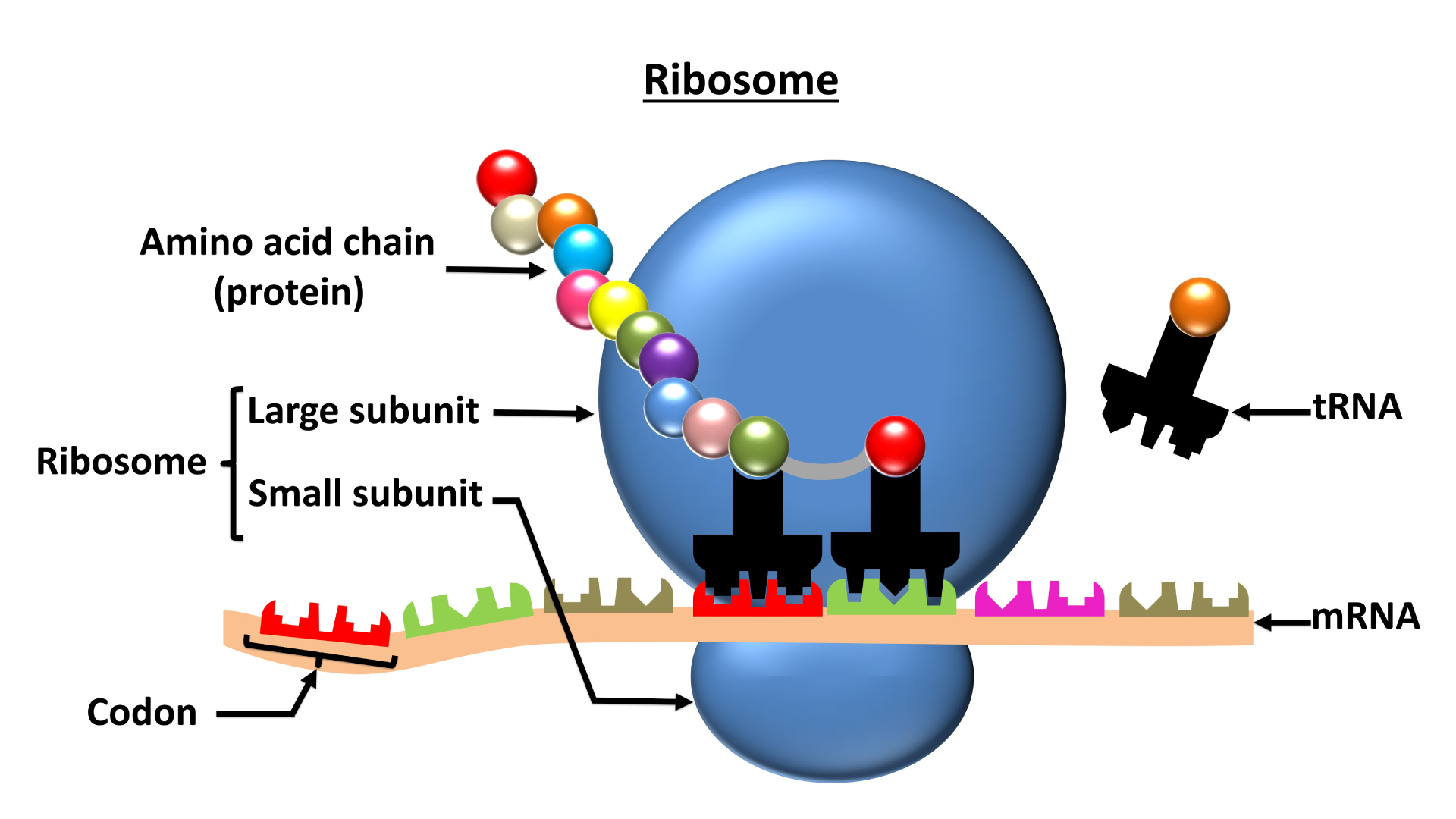
Definition: Cellular structures responsible for protein synthesis.
Location: Found in the cytoplasm of cells in both prokaryotes and eukaryotes.
Composition: Composed of ribosomal RNA (rRNA) and proteins.
Function: Facilitate the translation of messenger RNA (mRNA) into proteins by assembling amino acids in the correct order.
Two Subunits:
Large and small subunits come together during protein synthesis and dissociate when not active.
Conservation: Ribosomes are highly conserved.
-
How many populations of ribosomes carry out protein synthesis?
2
-Protein synthesis is carried out by two populations of ribosomes, one bound to the endoplasmic reticulum, the other free within the cytosol.
-
Where does protein synthesis occur specifically?
Within a cleft between the ribosomal subunits
-
Is protein synthesis slow? Elaborate:
NO
It is RAPID!!!!
• Adds 20 amino acids per second and can synthesise a molecule of actin every 20 seconds
• Protein turn-over (continual renewal or replacement of protein) is also rapid, so the cell still needs lots of ribosomes
-
Picture outlining how Codons and Anticodons Specify particular
Amino Acids:
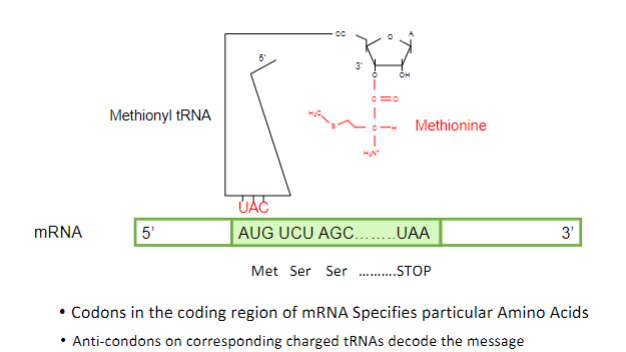
-
Ribosomal RNA in the Cell DOMINATE the cellular RNA population!!!
Can you name the 3 types of RNA and their corresponding cellular abundance?
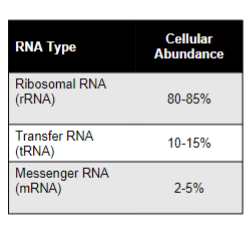
-
Mammalian Ribosomes consist of what subunits? Which together form? Can you state some extra facts?
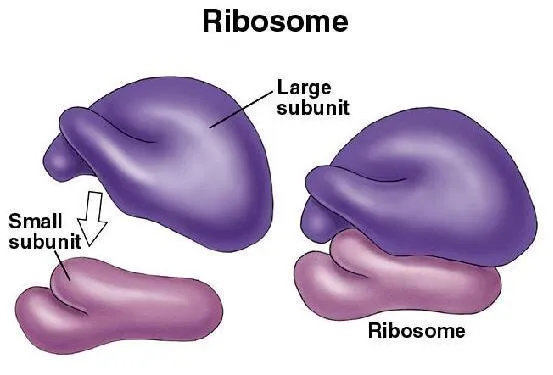
Consist of two subunits 40S and 60S, which together form the 80S ribosome
• 40S subunits have, 18S rRNA (1900 nucleotides) and ~33 proteins
• 60S subunits have three RNAs 5S, 5.8S and 28S (120, 160 & 4700 nucleotides) and ~49 proteins
-
What are the parts that make up the 80s Eukaryotic Ribosome? (include binding sites)
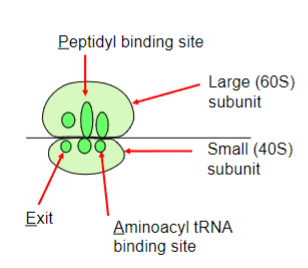
-
There are Three Stages in Protein Synthesis, what are they?
1.Initiation
2.Elongation
3.Termination
-
What is Initiation?
• Assembly of the ribosome on mRNA together with the first initiator tRNA : amino acyl tRNA (met-tRNA)
-
What is Elongation?
•Charged tRNAs delivered to the ribosome
•Addition of amino acids one at a time, building the polypeptide
-
What is Termination?
•Encounter with a stop codon
•End of protein synthesis and release of the polypeptide
-
Some general info on Eukaryotic translation factors:
• (Proteins directly involved in translation are calledinitiation or elongation factors and have a name thatis systematic)
• Initiation factors are called eIF + a number• For eukaryotic initiation factor 1, 2 etc
• Elongation factors are called eF + number• for elongation factor 1, 2, etc
•Others associated with a ribosomal subunit• L or S for large subunit or small subunit, e.g. L22
-
What is the first step of Initiation?
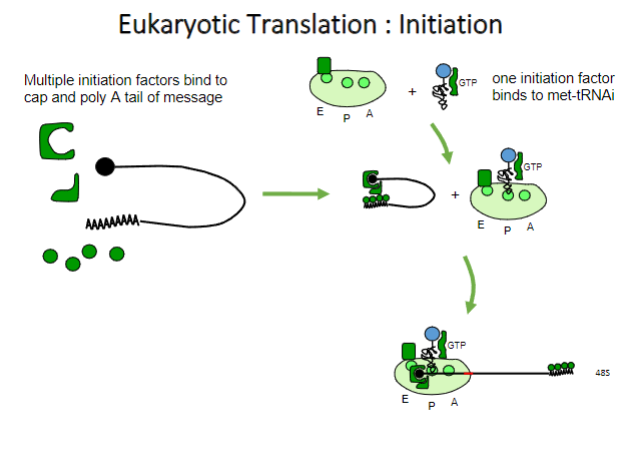
-
What is the second step of Initiation?
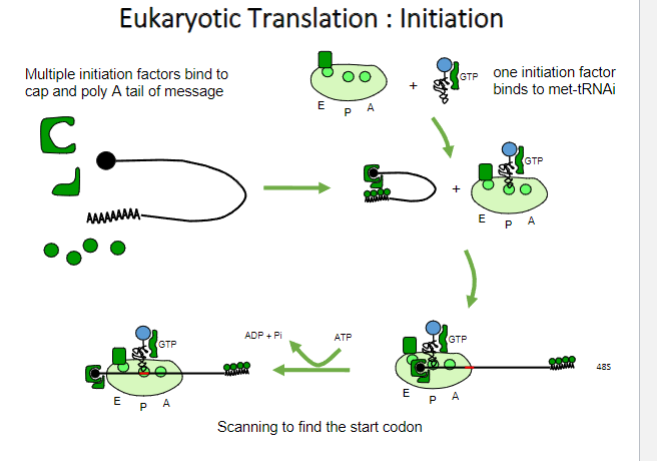
-
What is the third step of Initiation?
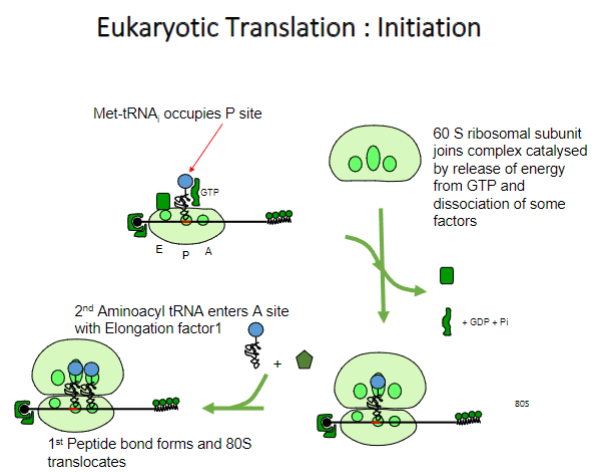
-
What are the steps of elongation?
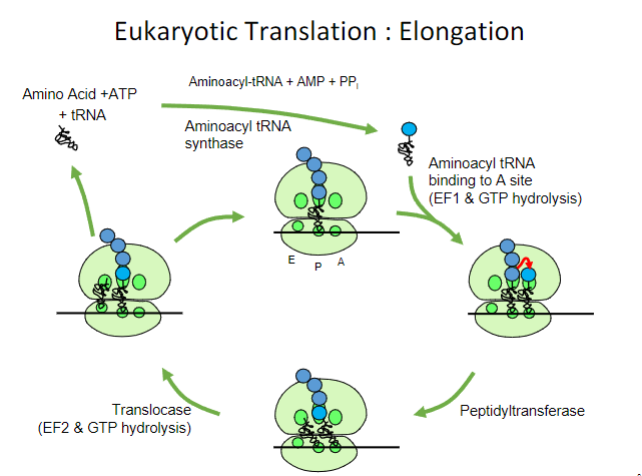
Aminoacyl-tRNA Binding (A Site):
The incoming aminoacyl-tRNA, carrying the next amino acid, binds to the A site on the ribosome.
Peptide Bond Formation:
The growing polypeptide chain (attached to the tRNA in the P site) forms a peptide bond with the amino acid on the incoming aminoacyl-tRNA in the A site.
Translocation:
The ribosome moves along the mRNA in the 5' to 3' direction, shifting the tRNAs
This movement exposes a new mRNA codon in the A site.
Ejection of Deacylated tRNA (E Site):
The tRNA that was in the P site, now without an amino acid, moves to the E site
The tRNA in the A site, now carrying the growing polypeptide chain, moves to the P site.
A Site Readiness:
The A site is now ready for the next aminoacyl-tRNA to bind.
-
What are polysomes?
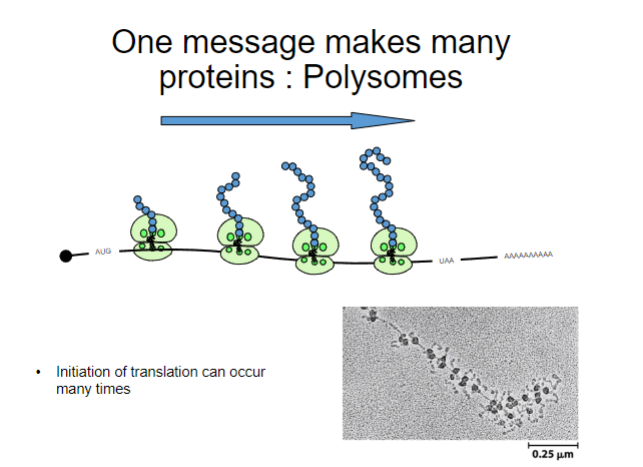
-A cluster of ribosomes held together by a strand of messenger RNA, where each ribosome is translating.
-
What are the steps of termination?
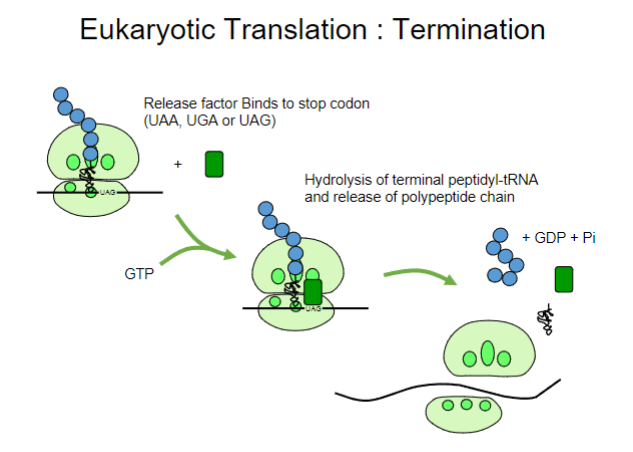
-
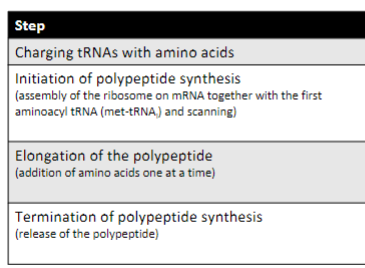
Protein Synthesis is energetically expensive; how much energy is required for the steps in the picture?
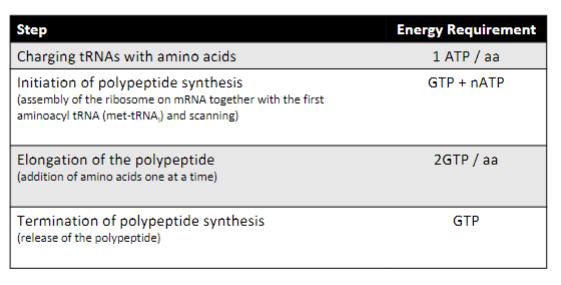
-
Picture outlining the differences between prokaryotic ribosomes vs Eukaryotic ribosomes:
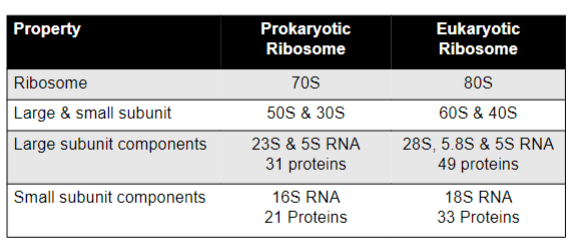
-
Picture outlining how Some Antibiotics Block Protein Synthesisand specifically target in Bacterial Ribosomes:
